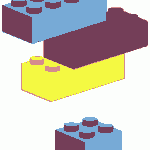 So, now you have your dream job. What next?
So, now you have your dream job. What next?
The expectations of your job go well beyond your title or job description. Your title may be the operations manager, the program manager, the engineering manager, etc. But, what does it really mean? What are you expected to do in order to be successful in your new role?
Understanding your role and responsibilities can sometimes be straightforward – but often not. A job description is a good place to start. But to a large extent, you need to be able to create your role.
The analogy I would like to draw here is to a standard lego kit. My kids love lego, and over the years they mastered how to build to the letter of the instructions. However, their best creations came out from being able to evolve their creations and try out new ideas. So, it is with your role. You have an instruction set to start with – your job description. If you meet the letter of that description, it is a start. To succeed, to have bigger impact and (also some fun), you need to be able to really tune into the evolving needs of the business and adapt your role.
So, how do you go about figuring out what you need to do?
Here are some guidelines that have worked for me that I am putting to use in my new role:
- Regularly check in with your manager as to whether the things you are doing are in line with what he expects. You were brought in to fulfill certain responsibilities – so, make sure they are being met. A check in at least once a week is critical to making sure needs are aligned.
- Talk to customers/clients to understand their expectations. Some of the expectations will likely be different from the needs of your immediate manager. You may have special skills that could help in certain areas and this would be an opportunity to expand your role and offer more business value.
- Talk to peer groups and understand how they interface with your team and what their expectations are. They are a source of valuable information and will provide you with ideas on how you can partner more effectively.
- Talk to people who have held your job prior to you or who are holding similar jobs. Understand their views of how to succeed in this role. What are the unwritten rules of the game and what should you do and not do to maximize your impact.
- Talk to trusted leaders who interface with your team – especially those who have had some history of working with your team. What is their view of how the team has done, and how this role was performed in the past? What should you continue doing, or do differently?
Certainly all these conversations should happen on a regular and ongoing basis – and with ongoing dialogue with your immediate manager. What you will learn is that the needs will change over time. This is your dynamic job description. Having an open and flexible outlook and being able to adapt to changing business needs will make a vast difference. By reaching out and having these conversations, you allow yourself to be influenced and look for opportunities to continually add more business value.
So, what is your role? It is really what you make of it. Start with your job description, be flexible, be open and build from there!
